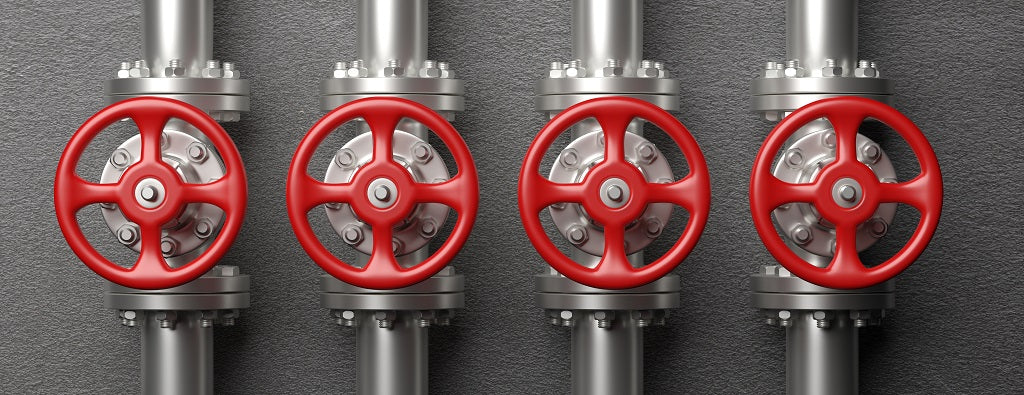Ingenious Control Valves: Enhancing Precision and Integrity
Ingenious Control Valves: Enhancing Precision and Integrity
Blog Article

Maximize Energy Savings and Convenience With Advanced Structure Automation Controls
In the world of modern design and center monitoring, the integration of innovative structure automation manages stands as a crucial development. By using the power of automation, structures can adapt, react, and advance in means that were as soon as unimaginable.
Energy Efficiency Perks
Energy performance advantages can significantly minimize energy usage and functional prices in buildings. By applying energy-efficient techniques and innovations, building proprietors and drivers can accomplish substantial cost savings while also adding to environmental sustainability. Among the main advantages of improving power efficiency in structures is the decrease of energy expenses. Energy-efficient systems, such as advanced structure automation controls, can optimize the use of sources like heating, lighting, and air conditioning, leading to lower power expenditures gradually.
Additionally, boosted energy effectiveness can lengthen the life expectancy of structure tools and systems. By operating extra efficiently, HVAC systems, lighting fixture, and other structure components experience less damage, resulting in lowered upkeep and replacement costs. In addition, energy-efficient structures commonly command greater residential property values and rental rates, offering long-lasting monetary advantages to proprietors.
Moreover, power effectiveness can improve owner comfort and efficiency. Correctly managed indoor settings with ideal lighting and thermal conditions create an even more conducive and positive workspace, bring about boosted worker satisfaction and performance. In general, the power effectiveness benefits related to advanced building automation controls are diverse, incorporating price savings, environmental stewardship, and resident wellness.
Boosted Convenience Control
Enhancing convenience control in structure atmospheres requires an advanced assimilation of advanced automation systems for optimum passenger wellness. By utilizing advanced structure automation controls, centers can tailor the interior environment to meet the details requirements and preferences of occupants. These systems make it possible for exact law of air flow, illumination, and temperature level, developing a comfortable and efficient environment. Owner contentment and efficiency are carefully connected to thermal convenience, making it important to have systems in position that can adjust to altering problems in real-time.
By incorporating these advanced controls, structures can not only improve comfort yet additionally enhance energy efficiency by optimizing system operations based on real occupancy and usage patterns. Eventually, prioritizing resident comfort through advanced automation systems leads to a much more satisfying and healthier interior atmosphere.
Operational Efficiency Improvements

Additionally, the execution of real-time tracking and analytics devices enables structure drivers to recognize energy inadequacies and operational anomalies immediately. By constantly checking power usage patterns and system efficiency metrics, adjustments can be made in real-time to optimize power consumption and make certain peak functional effectiveness. control valves. Additionally, including need reaction methods into structure automation controls can better enhance operational effectiveness by dynamically adjusting energy use based upon grid problems and prices signals
Indoor Environment Optimization
Reliable interior climate optimization is an essential facet of structure automation controls, making sure passengers' comfort and well-being while taking full advantage of energy savings. By using sophisticated sensing units and controls, developing automation systems can continuously monitor and readjust temperature level, moisture degrees, air quality, and air flow to produce an optimum interior setting. Preserving comfortable and consistent problems not just enhances passenger complete satisfaction yet additionally increases productivity and general wellness.
Indoor climate optimization also plays a critical role in energy efficiency. By fine-tuning heating, ventilation, and air conditioning click for source systems based upon real-time information and occupancy patterns, building automation controls can dramatically decrease energy intake - control valves. For example, executing strategies such as demand-controlled ventilation and thermal zoning can aid lessen energy waste while guaranteeing that each area of the building receives the necessary conditioning.

Sustainable Atmosphere Production
Structure automation regulates not just maximize indoor environment conditions for power efficiency and owner comfort however also lay the foundation for producing a sustainable atmosphere with tactical administration of systems and resources. By incorporating innovative structure automation technologies, such as sensors, actuators, and smart software, centers can monitor and readjust energy usage in real-time to decrease waste and decrease their carbon footprint. These systems make it possible for anticipating maintenance, determining look at this web-site potential problems before they intensify and optimizing devices performance to enhance long life and performance.
Moreover, sustainable setting production expands past energy management to include water preservation, waste reduction, and indoor air top quality enhancement. Structure automation controls can control water usage, identify leakages, and ensure proper waste disposal methods, adding to total sustainability initiatives. Furthermore, by keeping an eye on and controlling ventilation and filtration systems, these innovations boost passenger health and wellness and efficiency while lowering energy intake connected with a/c procedures.
Final Thought
To conclude, advanced structure automation controls offer substantial advantages in terms of power cost savings, convenience control, functional effectiveness, interior climate optimization, and developing a sustainable environment. By carrying out these controls, structures can attain optimum performance while minimizing energy intake and enhancing passenger convenience. It is obvious that using innovative automation innovation is essential in boosting building efficiency and creating a more lasting future.
Power efficiency benefits can dramatically decrease power usage and operational costs in structures. In general, the energy performance benefits connected with sophisticated structure automation controls are multifaceted, incorporating price savings, environmental stewardship, and passenger wellness.
Additionally, incorporating why not look here demand feedback strategies into building automation controls can even more improve functional performance by dynamically readjusting energy usage based on grid problems and rates signals.
Structure automation manages not just enhance indoor environment problems for energy performance and owner convenience but also lay the foundation for creating a sustainable setting via critical administration of sources and systems.In verdict, advanced structure automation regulates deal substantial advantages in terms of power financial savings, comfort control, operational efficiency, indoor environment optimization, and producing a sustainable environment.
Report this page